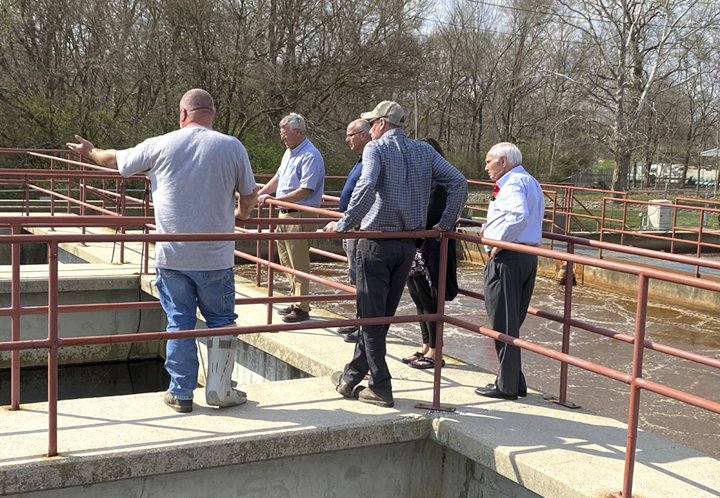By JONATHAN SNYDER
Updates and upgrades to the Wastewater Treatment Plant are expected to be completed between the summer and October of 2025.
The new upgrades increase the maximum stormwater capacity of the facility. Previously, the facility could hold nine million gallons of wastewater at its peak flow — the updates will allow the facility to hold 13 million gallons. Common Council member Josh Hunt stated that in the past, major amounts of rainfall would put the facility at maximum capacity.

“We would get the water from stormwater and things like that, that would leak into systems,” Hunt said. “And it would put us over the top for total capacity. And then if we’re over capacity, then you gotta let that water back into the river. And that’s not the proper way to do that.”
The new updates will make the plant more reliant on biological treatment processes versus chemically based methods, which will save costs on chemical purchases. An oxidation ditch, which manages rainwater flow, doubles as a habitat for bugs that will eat the waste materials in the water, cleaning it in the process. The plant will go from two separate plants to one, along with a new pump station for sewage flow and circular clarifiers, which further polish wastewater.
The James S. Jackson Construction Company, the primary contractor for the project, is currently pouring concrete for multiple structures, according to Wastewater Treatment Plant Supervisor Tony Fey. The old pump station has been removed and the digging process for pouring concrete for the new station has begun. Installation of new equipment in the gravity thickener and some underground piping is also being worked on.
Value engineering done by Jackson and the city have seen a lot of money saved and redirected towards other areas, like new launder covers for the clarifiers. The covers decrease scum and algae buildup on weir troughs and walls, saving time that’s used for scrubbing those areas. Jackson is also crushing old concrete from the original plant built in the 1930s and turning it into gravel, to avoid paying that expense.
“They (Jackson) figured out what we don’t have to have, where we could save some money, but then still have a real, high quality product for a great value,” Hunt said. “We didn’t want to sacrifice quality, but we knew there were certain things we didn’t need.:
“We may be able to save two to three hours, three to four hours a day, scrubbing once a day, to maybe five to six hours a month,” Fey said. “And the guys that are up there for summertime, in the dead of summer, they could be up there a couple hours a day just keeping them touched up and cleaned up.”
These cost savings have put the city under budget for the project. Hunt stated that an additional mix of federal grant money and low bond rates from the State Revolving Fund have saved the city millions of dollars. Jackson’s bid also came in low at nearly $6 million less than other bids.
The additional cash has allowed the city to fix some lining in the sewer pipes underground. Fixing the lining prevents groundwater from leaking into the system and wasting resources at the plant, according to Hunt.
“We’ve been really happy with the main general contractor and all the subcontractors,” Fey said. “We’ve been working together, and I feel that they have gone above and beyond.”
“The comments that I’ve heard from our team is that James S. Jackson and all their subs have been very good to work with,” Hunt said. “Friction wise, it’s been very small. On my end, I haven’t had a lot of issues where people are coming to me with complaints about vendors or non-completion of work, or any issues like that. ”
jonathan@news-banner.com



